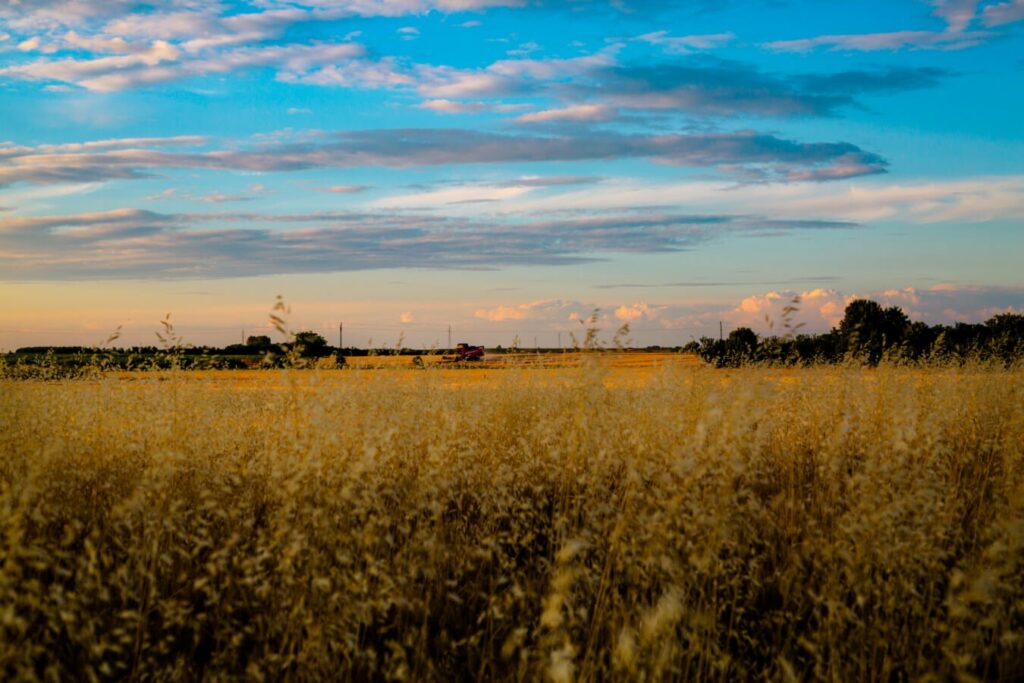- How to Find the Best Garden Pruning Saw: Our Top Picks - January 5, 2024
- Garden Tower Project Review: How To Start Home Gardening ASAP? - January 5, 2024
- Best Garden Scissors Guide: Which Model Suits You Best? - January 5, 2024
Texas is a pretty massive state, and as such, many things vary from region to region. One such thing that varies greatly is the climate. Texas is comprised of eight growing zones – 6a, 6b, 7a, 7b, 8a, 8b, 9a and 9b. Each of these zones has specific weather situations and different growing conditions.
Understanding how Texas’ unique climate and geography affect your garden and how to adapt to it is key to growing a healthy garden all year round. In this guide, you will learn more about the growing zones in Texas, their location, and what kinds of plants grow well in these areas.
Growing Zones in Texas
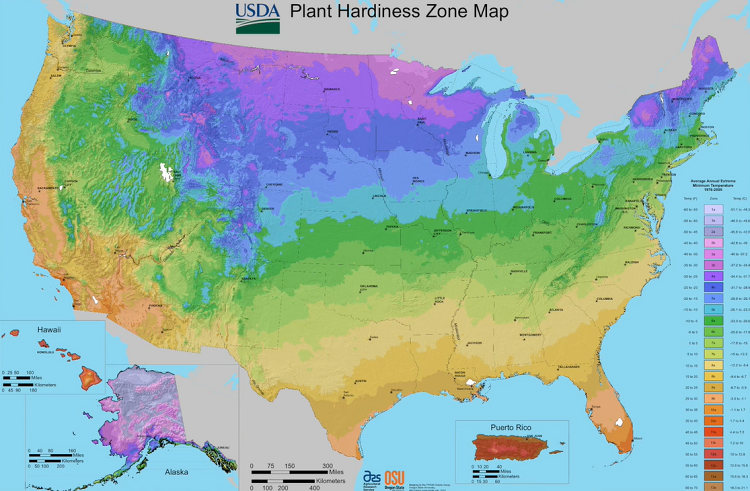
The US Department of Agriculture (USDA) has set up a system of eight growing zones for Texas. The purpose of the system is to make it easier for gardeners to determine what plants are possible in their gardens based on the average annual minimum temperature within each zone.
Each zone has a range of temperatures, and the higher the minimum temperature, the more difficult it is to grow plants that would usually be considered tropical.
| USDA plant hardiness zones in Texas | Minimum temperature(°Fahrenheit) |
| 6a | -10 to -5°F |
| 6b | -5 to 0°F |
| 7a | 0 to 5°F |
| 7b | 5 to 10°F |
| 8a | 10 to 15°F |
| 8b | 15 to 20°F |
| 9a | 20 to 25°F |
| 9b | 25 to 30°F |
Texas Growing Zone 6
Texas is known for its agricultural activities, with 86% of the landmass under some form of cultivation. The Central and South regions of Texas are in the USDA Hardiness zone 6. The climate is generally mild, with a minimum winter temperature of -10 to 0 degrees F. Zone 6 gives you many options when it comes to growing your crops.
Plants That do Well in Texas Growing Zone 6
Zone 6 has a lot of great plants for gardening and landscaping. Gardeners can find various plant species from seed companies, nurseries, and garden centers in Zone 6. In many areas of this zone, spring, summer, and fall blooms grow very well.
Vegetables to Grow in Texas zone 6 and When to Grow Them
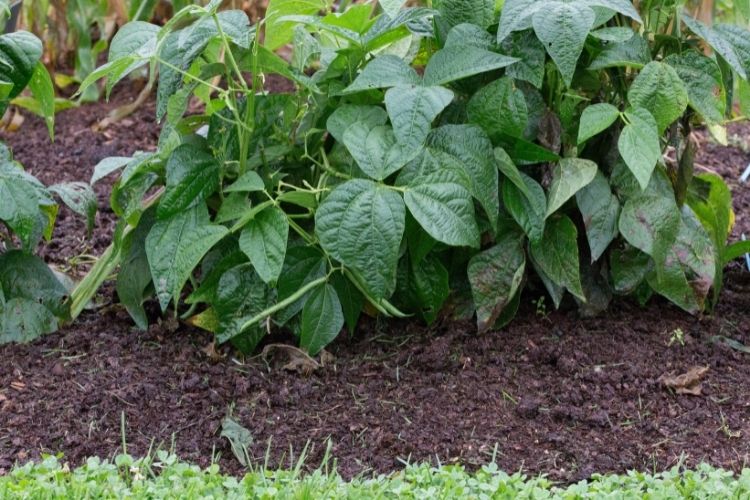
Zone 6 is the perfect place for a garden. Not only can you grow a variety of plants, but the weather is also quite favorable. The temperature stays cool enough to grow asparagus and rhubarb, but it gets warm enough for melons and watermelon.
It would be best to plan which vegetables to plant, based on how long they need to grow. The vegetable planting season in zone 6 starts after the last frost – from mid-March to mid-November. Zone 6 is perfect for the following vegetables:
- Bush beans
- Brussels sprouts
- Cabbage
- Cauliflower
- Indeterminate tomatoes
- Longer season melons
- Tomato
- Eggplant
- Peppers
- Kale
- Onions
- Celery
- Spinach
- Broccoli
- Radish
- Peas
- Cucumber
- Butter lettuce
- Winter squash
Best Perennials to Grow in Texas Zone 6 and When to Grow Them
You can grow a variety of flowers and grasses within Zone 6. The perennials in this zone are hardy enough to withstand the cold winters and appreciate the moderately long growing season. The flowers in this zone come in an array of colors, including fragrant and delicate ones and versatile ornamental grasses. Here are some of the best perennials to grow in zone 6.
- Lilies
- Geranium
- Asclepias
- Salvia Sylvestris
- Liriope
- Astilbe
- Coreopsis
- Hostas
- Peonies
- Phlox
- Foxglove
- Rudbeckia
- Agastache
- Coneflower
- Iris
- Hellebores
- Asters
- Delphinium
- Campanula
- Heuchera
Types of Annuals to Plant in Texas Zone 6

Annual plants live for one year, but their life cycle is fast. Once winter comes, the plant dies and relies on its seeds to germinate in the following spring. Annuals are frost-sensitive plants, so you should wait until the last spring frost date to put them in your garden. Below are some annuals you can plant in your zone 6 gardens.
- Pansy
- Cleome
- Petunia
- Snapdragons
- Cockscomb
- Strawflower
- Cosmos
- Sunflower
- Sweet Alyssum
- Torenia
- Verbena
- Marigold
- Mexican Heather
- Moss Rose
- Nasturtium
- Nemesia
- Ornamental Pepper
Tips for Farmers Growing in Texas Zone 6
- Some cold-hardy fruit trees can be grown in zone 6, such as apples, European pears, and nut trees. Some favorites are Honeycrisp, Gala, Conference, McIntosh apple trees; Bartlett European pears; and nut trees like almonds or pecans.
- Many types of peaches and plums, cherries, blackberries, and blueberries grow well in zone 6. Nuts such as walnuts, pecans, chestnuts, and pine nuts can be grown in this zone.
- In zone 6, the first and last frost time frames are variable. They are vulnerable to unpredictable weather patterns. Zone 6’s last frost dates are April 1 to April 21, but this area has experienced later frosts. The first frost dates occur from October 17 to 31, but these dates can vary over time.
Texas Growing Zone 7
This zone has moderate winters with an average minimum temperature between 0 and 10 degrees Fahrenheit. This area is perfect for gardens with various plant options, such as seed catalogs, local home stores, nurseries, and greenhouses.
Plants That do Well in Texas Growing Zone 7
Zone 7 has many different climates. Plants in the arid regions of Zone 7 need to be able to tolerate drought, while plants in wet environments should withstand the water. A wide variety of hardy plants can be grown successfully in Zone 7 because the region contains different climates.
Vegetables to plant in Texas Zone 7 and When to Plant Them
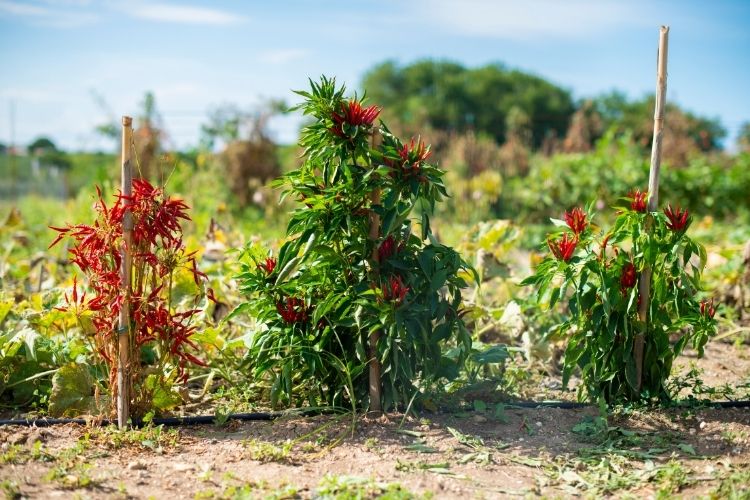
Vegetable planting time can be tricky. You need to worry about the frost and cold snaps, which can damage your young vegetables. Row covers or cold frames can help protect against early spring or late fall cold temperatures. Here is a list of vegetables to grow in Zone 7.
- Arugula
- Hot peppers
- Sweet peppers
- Turnips
- Cabbage
- Carrots
- Beets
- Broccoli
- Lettuce
- Turnips
- Kale
- Collards
- Onions
- Peas
- Potatoes
- Radishes
- Spinach
Perennials to Plant in Texas Zone 7 and When to Plant Them
Perennials are plants that grow back repeatedly and may even get a little bigger each year. After a few years, they will reach their mature size and may also produce more flowers. You can start planting your perennials from April 15, which is the last frost date. Here are some perennials that are perfect for Zone 7.
- Coneflowers
- Joe Pyweed
- Catmint
- Creeping Jenny
- Lamb’s Ear
- Salvia
- Daylilies
- Black-Eyed Susan
- Sedum ‘Autumn Fire’ or ‘Autumn Joy
- Shasta Daisy
- Coral Bell
- Astilbe
- Lenten Roses
- Bleeding Heart
- Hosta
- Solomon’s Seal
- Jack Frost
Annuals to Plant in Texas Zone 7 and When to Plant Them

Annual flowers are those that you grow yearly. They do not last like perennials because when the frost comes, they die. Planting cool-season annuals in fall can give you flowers in the winter and early spring. Planting them in late winter or very early spring can give you flowers in the spring.
- Lantana
- Salvia
- Spider flower
- Strawflower
- Globe amaranth
- Cosmos
- Coreopsis
- Coleus
- Pansy
- Lobelia
- Marigold
- Petunia
- Portulaca
- Geranium
- Dahlia
- Cypress vine
- Monkeyflower
- Forget me not
- Impatiens
- Begonia
Tips for Farmers growing in Texas Zone 7
- In most cases, you need to plant vegetables in the early summer when the weather is most suitable for them. This way, you can enjoy a long, hot summer with mild winters.
- In zone 7, half-hardy annuals such as dianthus and alyssum can handle a light frost.
- To grow the best herbs, you need to choose what to plant. Some herbs are easier to grow than others. Rosemary varieties such as Hill Hardy and Madeline Hill can quickly grow in colder climates, while others need more care or encouragement.
Texas Growing Zone 8
Zone 8 is a warm plant hardiness zone that stretches from the southern coast of the US up to the west coast. With an average winter temperature of 10-20 degrees Fahrenheit, Zone 8 has a long planting season with a hot summer and a mild winter.
Plants That do Well in Texas Growing Zone 8
Many plants can grow in zones 8, but you should consider how much moisture and sun they need before you purchase any. When you narrow down the list by zone, it will be simpler to know what climate to purchase them in. Below are some of the plants that you can grow in Zone 8.
Vegetables that Thrive in Texas Zone 8 and When to Plant Them
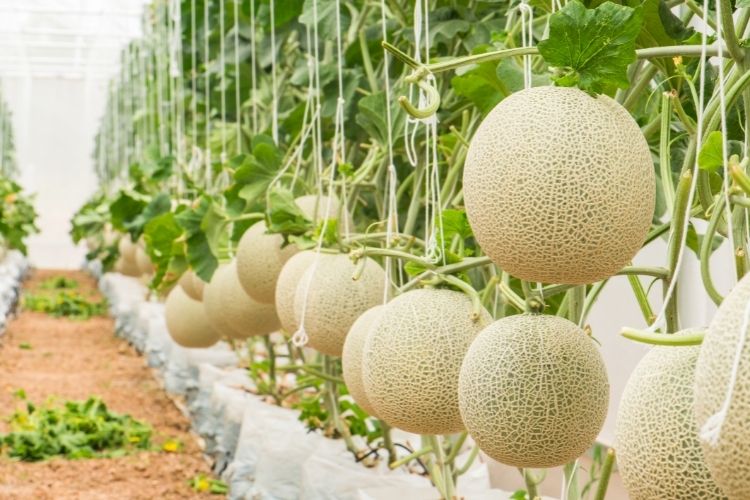
Vegetables can be grown in either the spring or fall or even in both seasons if they are cool weather plants. In the summer, you can grow vegetables like corn, tomatoes, and peppers. Some of the vegetables you can grow in Zone 8 are;
- Cantaloupe
- Field peas
- Hot peppers
- Okra
- Tomatoes
- Watermelon
- Beets
- Cabbage
- Carrots
- Kale
- Lettuce
- Peas
- Spinach
Perennials That You Can Plant in Texas Zone 8 and When to Plant Them
Perennials are a must-have for plants that will stay in your garden or backyard for more than two years. These plants will not only survive but also create a beautiful landscape. Although you can plant perennials at any time of the year, the best time to grow them in Zone 8 is April or September, when it is not freezing. Here are a few popular Zone 8 perennials for your garden.
- Creeping Thyme
- Phlox Paniculata
- Agastache Blue Fortune
- Lemon Queen Sunflower
- Achillea Terracotta (Yarrow)
- Echinacea Tomato Soup
- Henry’s Lily
- Dicentra
- Ox-Eye Daisy
- Dahlia Frost Nip
- Ajuga Reptans
- Spotted Dead Nettle
- Gaillardia
- Sea Thrift
- Rozanne
Annuals That You Can Plant in Texas Zone 8 and When to Plant Them
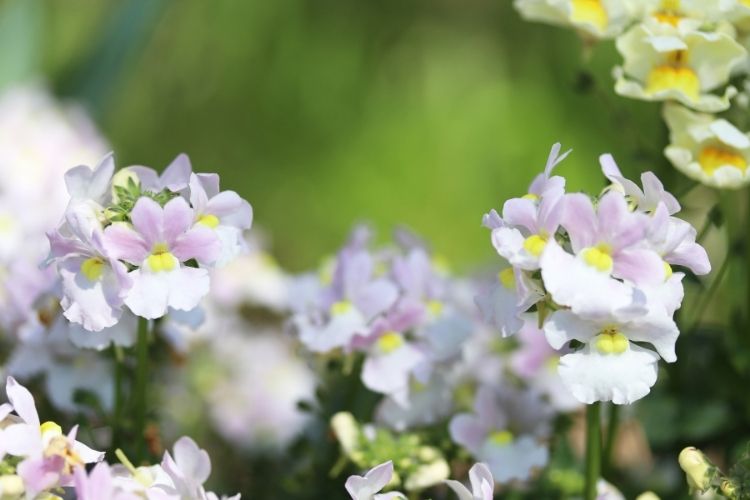
Annuals provide all the colors and interest your garden needs. They do well in zone 8 due to the warmer, longer summers and mild winters. The best time to plant your annuals is after the last frost. Below are some annuals that do well in Zone 8.
- Begonia
- Cosmos
- Ornamental peppers
- Marigolds
- zinnia
- Torenia
- Sweet potato vines
- Coleus
- Dichondra
- Polka dot plant
- Browallia
- Lobelia
- Nemesia
- Caladium
- Bacopa
- Sweet asylum
- Balsam
- Nicotiana
- Cineraria
- Viola
Tips for Farmers Growing in Texas Zone 8
- In Zone 8, you can plant many familiar vegetables, sometimes even more than once a year, if you plant the first crop early enough.
- Cool-season vegetables such as collards and spinach are great for Zones 8.
- To keep your winter plants healthy in Zone 8, use a row cover. Just be sure to raise it on days with sun, as the cover can cause overheating.
- Fall and winter vegetables such as leafy greens and spinach can be grown for an extended growing period using mulching. The mulches protect them against extreme cold or frost.
Texas Growing Zone 9
Planting Zone 9 is perfect for year-round gardening. With warm winters and hot summers, this zone is active all year long. Gardeners can expect an average minimum winter temperature of 20 to 30 degrees F.
Plants that do Well in Texas Growing Zone 9
In Zone 9, the heat is a more significant concern than the cold. Plants that need low water requirements do well in this zone. In the extreme heat, spring gardening starts earlier, and the fall gardens produce for a much more extended time.
Vegetables to Plant in Texas Zone 9 and When to Plant Them

Despite the 9-month growing season in Zone 9, you should not expect to see the same vegetables repeatedly. The extreme heat of summer affects the vegetable garden making your crop perform poorly. You can start your vegetables indoors 6-8 weeks before the last frost date. Below are some vegetables that do well in Texas Zone 9
- Broccoli
- Brussel sprouts
- Cabbage
- Cauliflower
- Greens
- Spinach
- Beans, Snap
- Beets
- Carrots
- Celery
- Collards
- Corn
- Cucumbers
- Eggplant
- Kale
- Kohlrabi
- Leeks
- Lettuce
- Okra
- Onions
- Parsnips
- Peas
Perennials to Plant in Texas Zone 9 and When to Plant Them
The best time to plant your perennials is usually in April and September. Below are some of the perennials that you can grow in zone 9.
- Passion Flower Vine
- Butterfly Pea
- Scarlet Sage
- Spider Lily
- Railroad Vine
- St. Andrew’s Cross
- False Goldenrod
- Columbine
- Purple Coneflower
- Blanket Flower
- Blue Porterwee
Annuals to Plant in Texas Zone 9
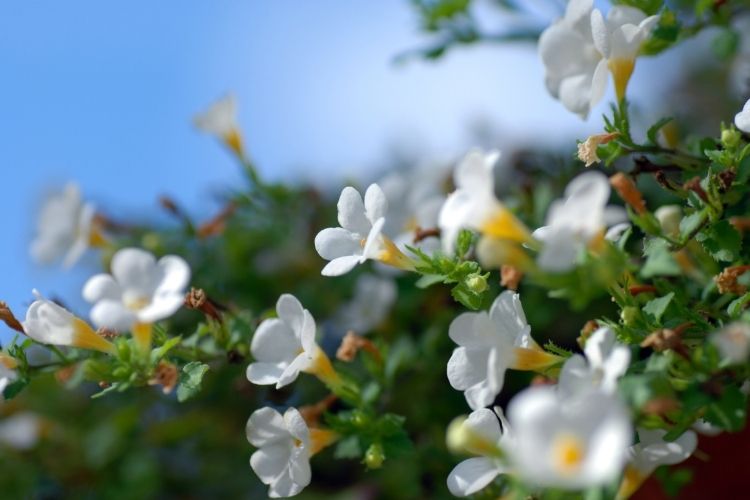
- Bacopa
- Alyssum
- Firecracker Plant
- Strawflower
- Lantana
- Cypress Vine
- Nierembergia
- Zinnia
- Verbena
- Sweet pea
- Poppy
Tips for Farmers growing in Texas Zone 9
- Vegetables that do well in the heat of zone 9 include okra, sweet potatoes, eggplant, Chinese red or green long beans, and melons. Legumes are also a good choice as they are summer-friendly as well as healthy.
- Many tropical fruits, such as kiwi, passion fruit, and guava, grow well in Zone 9; however, mango and papaya need warmer temperatures to grow.
- Citrus trees are great for Zone 9 but can be easily overwhelmed by unexpected cold snaps.
FAQs
Answer: It is best to start your plants indoors and set up your garden after the last frost date. For example, for those in zone 9b, that would be around January 1 – January 18. If you are seeding into the ground, do it after the last frost date.
Answer: A big part of Central Texas, the Hill Country, and Big Bend are in Zone 8 (10F – 20F). In the deep south of Texas, it is Zone 9 (20F – 30F).
Answer: A tender annual is a type of annual that cannot handle frost. These plants should be planted in the spring when the temperature is at least 55 degrees. Make sure it is entirely safe from frost to enjoy these plants for many years to come.
Answer: When it comes to planting, different approaches have their pros and cons. You can sow seeds or purchase blooming plants. Sowing seeds outside is a good option if it’s been more than two months since the last frost, but it can take a while for flowers to grow.
It’s a quicker method to sow in flats indoors, but you’ll need to do this at least 6 to 8 weeks before your last expected frost date.
Conclusion
An area’s climate plays a vital role in determining what kind of plants grow best in it. Texas is one of the most diverse and unique places in America — it is hot and humid in the summer and cold in the winter. The state has the most extensive number of farms and ranches in the US.
With proper knowledge of your growing zone in Texas, you can enjoy success in your gardening or farming activities. The US Department of Agriculture has designed several growing zones based on the average annual minimum temperature in a given area. It is an attempt to predict how plants will react to different environmental factors.

